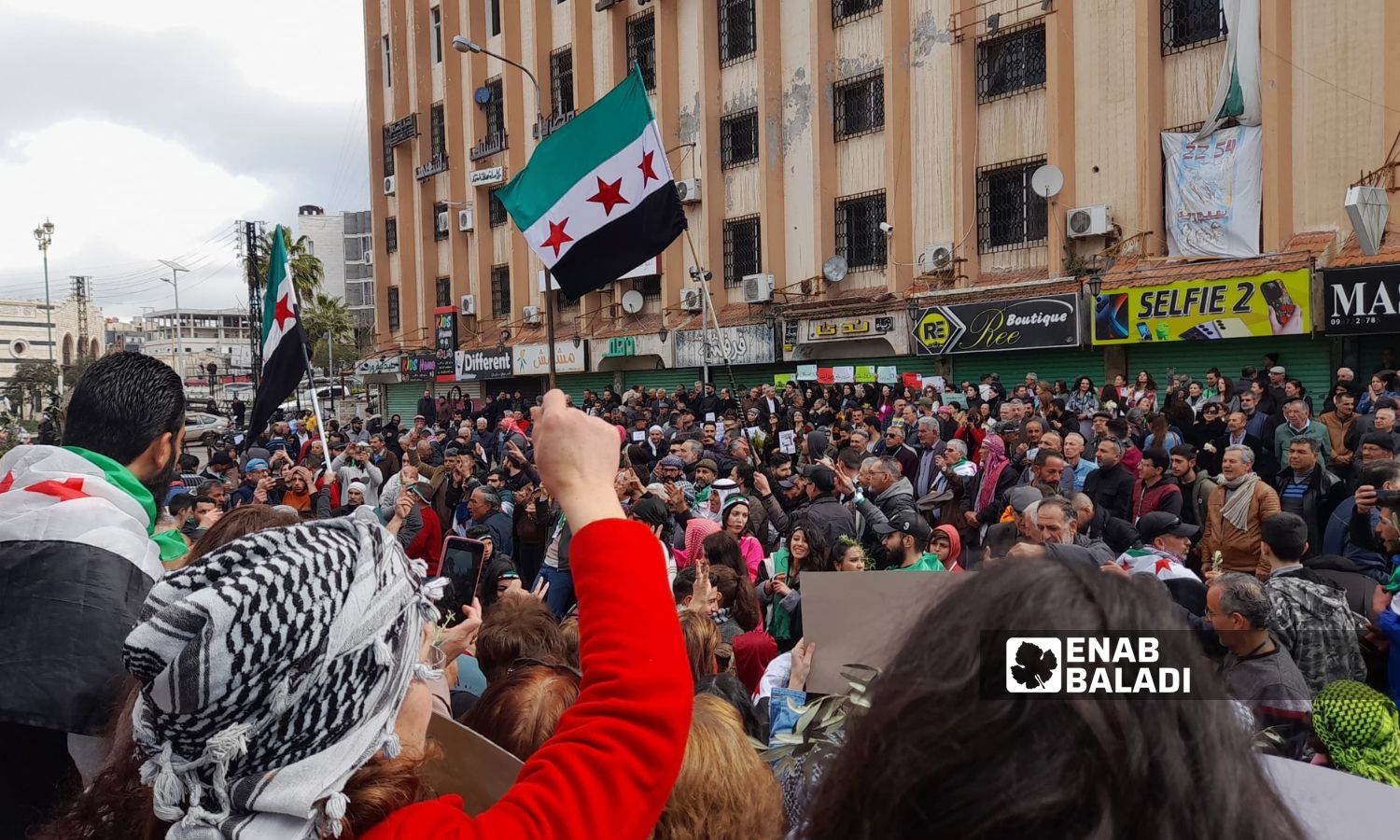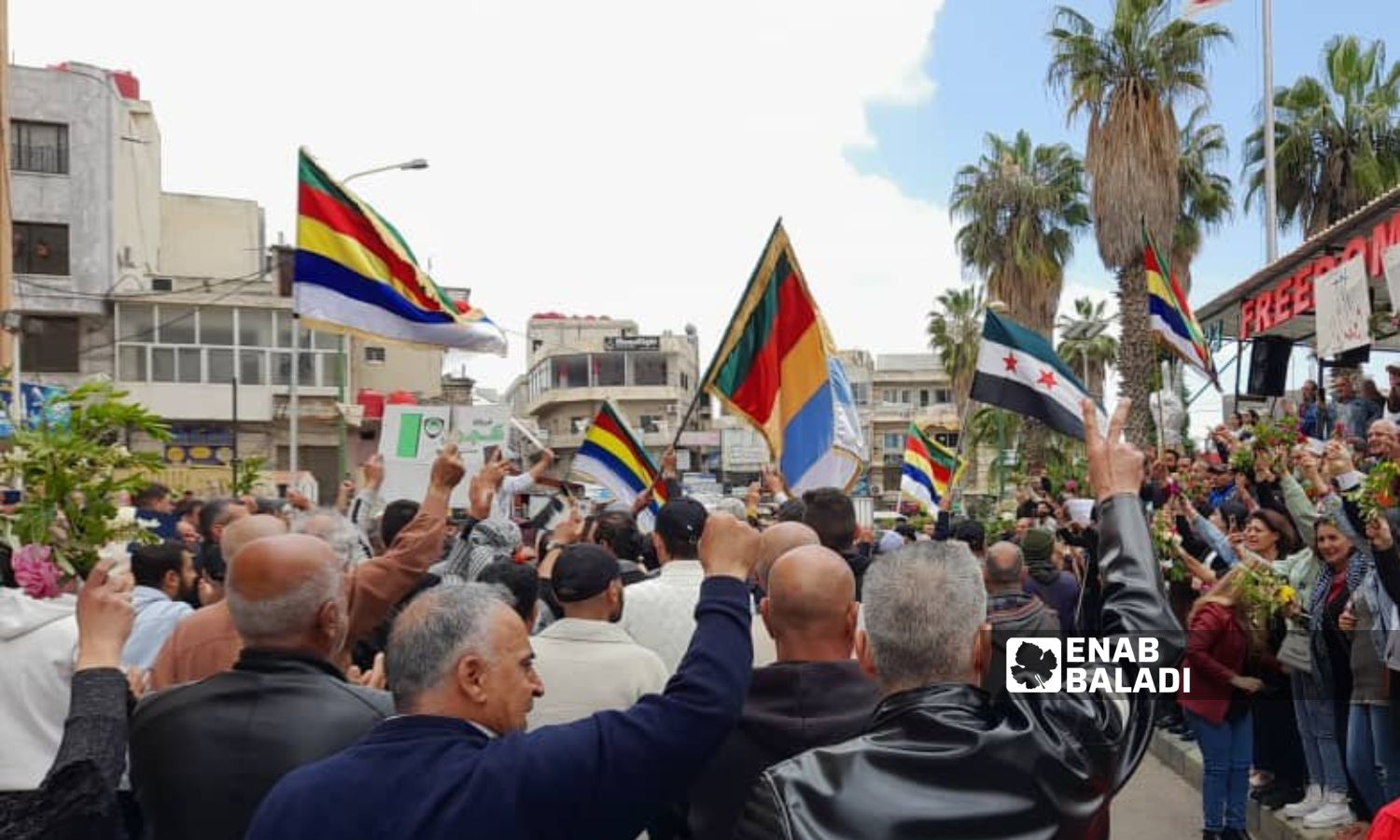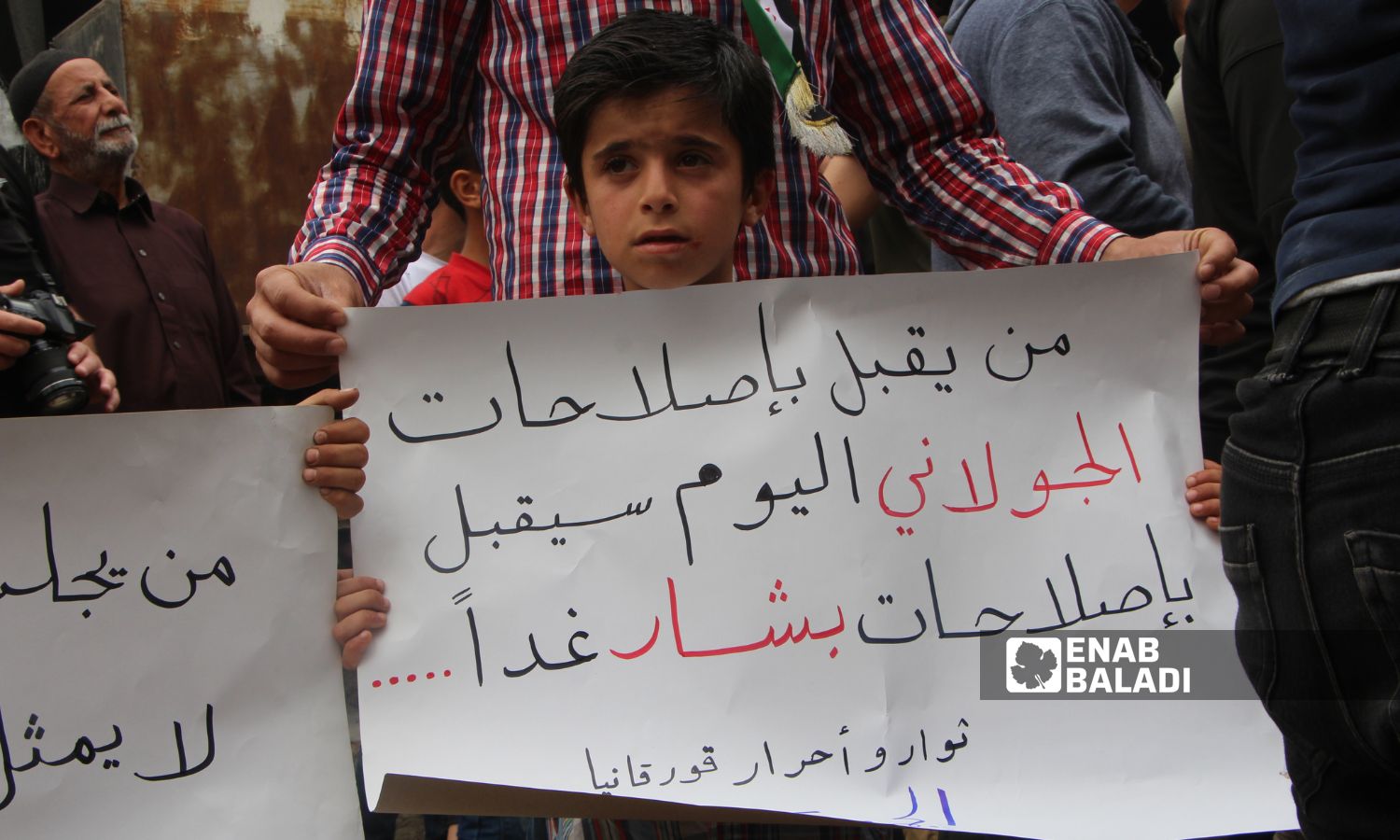



The voices and throats of demonstrators in As-Suwayda city in southern Syria, demanding the departure of Syrian President Bashar al-Assad, did not move the pens and lenses of the regime’s media, which continue to ignore what is happening as peaceful protests reach their ninth month.
In contrast, those media outlets, along with those close to the regime, continue to cover the peaceful protests opposing Hayat Tahrir al-Sham (HTS) in Idlib city, in addition to circulating video recordings by pro-regime figures of demonstrations in northern Syria with phrases that align with the regime’s narrative of the area as being a place of “chaos and terrorism.”
According to Enab Baladi‘s monitoring of reports and news published by the three official newspapers, Al-Thawra, Al-Baath, and Tishreen, in addition to the official Syrian news agency (SANA) and Al-Watan newspaper close to the regime, the coverage of the protests in As-Suwayda is completely absent, with the mentioned media outlets only covering service and agricultural issues in the province.
This neglect has continued since August 16, 2023, when a number of residents of the town of al-Qurayya in southern As-Suwayda called for a sit-in at the tomb of the leader of the Great Syrian Revolution, Sultan Pasha al-Atrash, with the invitation reading “I marvel at those who find not their daily sustenance and do not come out brandishing their swords,” protesting against a nearly 300% hike in fuel prices.
Protests soon turned into a general strike, roadblocks, and demands for the overthrow of the Syrian regime and to live with dignity, freedom, and democracy not under military and Baath party rule.
Prominent figures and sheikhs from As-Suwayda blessed the demonstrations, and they were discussed in European forums, including remarks by the UN Special Envoy to Syria, Geir Pedersen, during a briefing he presented to the Security Council about the situation in Syria, stating that a political solution is the comprehensive path that could achieve the sovereignty and unity of Syria, after he talked about the As-Suwayda protests.
The German envoy to Syria, Stefan Schneck, praised the courage of the people of As-Suwayda and Daraa demanding justice, freedom, and citizenship, announcing his support for those calling for peaceful dialogue, the release of detainees, and the realization of their legitimate aspirations.
Security forces opened fire on protesters in September 2023, without causing injuries at that time, but in February last year, civilian Jawad al-Barouki died, affected by wounds resulting from Syrian security forces firing to disperse a demonstration in As-Suwayda city.

A demonstration in al-Karamah Square in the center of As-Suwayda city in southern Syria demanding the overthrow of the Syrian regime – May 3, 2024 (Enab Baladi)
Al-Watan newspaper, close to the regime, accompanies the peaceful popular movement opposing the policies of Tahrir al-Sham in Idlib, while military reporters and pro-regime figures publish photos and news about the demonstrations, suggesting that what happens in Idlib is a result of “chaos, not revolution” and that the groups ruling northern Syria are “takfiri” organizations.
Mohamed Dabaa, a war photographer for the loyalist Sama channel, publishes almost daily about the demonstrations occurring in Idlib, and even about the calls for them, exploiting the events to bolster the regime’s narrative that there is “no revolution” in Syria.
Since February 26 last year, the popular movement demanding the overthrow of Abu Mohammad al-Jolani, the leader of Tahrir al-Sham, and rejection of unilateral policy continues, led by civilian activists and supported by military and religious scholars, especially after torture incidents in the HTS’ prisons came to light then.
The demonstrations were met with promises and reforms and intensive meetings of al-Jolani, the Salvation Government, and the General Shura Council, including a general amnesty for detainees with terms and exceptions, and the formation of committees to listen to the residents and exempt some building fees according to conditions.
Subsequently, a package of promises was put forward, and work began on implementing them, including restructuring the General Security Service within the Ministry of Interior in the Salvation Government and forming a supreme advisory council to look at public policies and strategic decisions in the region.

Demonstrators in Qurqanya, northern Idlib countryside, demand the overthrow of the leader of the Hayat Tahrir al-Sham, Abu Mohammad al-Jolani – April 26, 2024 (Enab Baladi/Iyad Abdul Jawad)
The regime did not resort to widespread violence in facing the demonstrations, but it relied on security destabilization, in addition to betting on the time factor hoping the demonstrations in As-Suwayda would fade, according to a report by the Omran Center for Strategic Studies prepared by researcher Siba Abdul Latif.
The researcher sees that the regime dealt with the movement in a security manner, where it had no desire to reach a comprehensive confrontation, dealing with the movement as a local case isolated from the national Syrian context for three reasons:
if you think the article contain wrong information or you have additional details Send Correction